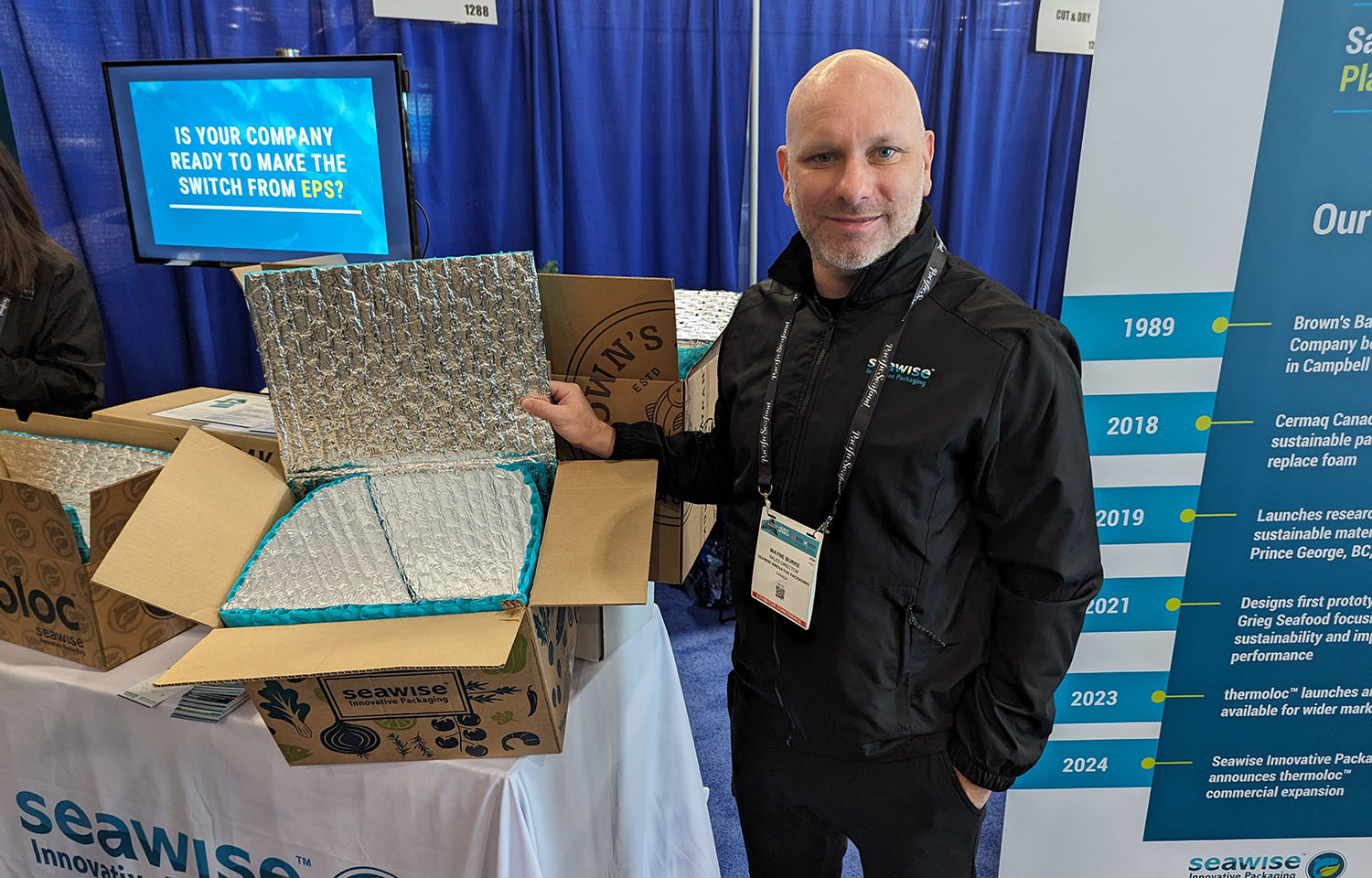Seawise Innovative Packaging recently launched a new alternative form of packaging designed to replace widely used extruded polystyrene (EPS) foam, commonly known by the brand name Styrofoam.
The new form of packaging, dubbed thermoloc, was designed to be a cost-effective solution for companies trying to reduce the use of plastics in their supply chain, Seawise Sales Director Wayne Burke told SeafoodSource during 2024 Seafood Expo North America – which ran from 10 to 12 March in Boston, Massachusetts, U.S.A.
Seawise’s origins stem from Brown’s Bay Packing Company, a salmon processor and packer in Campbell River, British Columbia, Canada that serves major salmon companies in the province. The original request in 2018 led the company to launch a research lab that developed the material science that led to the creation of Seawise Innovation Packaging and its commercial development of thermoloc in 2024.
“We were asked by some of our customers to come up with a sustainable solution that would replace Styrofoam,” Burke said.
Manufacturers' usage of EPS packaging has been the subject of legislation due the environmental impact of EPS, which cannot be recycled. Polystyrene bans and phase-outs are now in effect in numerous U.S. jurisdictions, forcing seafood packagers to begin seeking alternatives.
“If you’re in the seafood industry and you’re shipping to California, municipalities in some cases won’t take Styrofoam,” Burke said.
The thermoloc product is a half-inch-thick liner for packaging. Burke said that it has been outperforming Styrofoam’s thermal properties at a similar weight. It is also fully recyclable, with the early version of the package launching as an low-density polyethylene (LDPE) that can be recycled.
“We take the liner and give them an outer, and we’re trying to get that whole package at or just under what they pay for Styrofoam,” Burke said. “Being able to transition them away, you’ve got to give them a full solution.”
Burke said the company started with seafood, meal kits, and pharmaceuticals but has been having conversations with companies working in a number of other industries.
“There are grocers, there are chocolates, there are flowers, where they have to keep their product at a certain environment and keep it at a certain temperature but at a price point that makes sense,” Burke said.
Seawise delivers thermoloc to packers and processors in either a large roll or multiple sheets custom-cut to match the specifications of the box it will line. Seawise also offers thermoloc as a full-package solution.
“It is all customizable, because there isn’t a standard size box, whether it be for seafood or something like meal kits,” Burke said.
One of the obstacles to widespread adoption of compostable packaging – in addition to its cost – is the lack of infrastructure to deal with it. In many municipalities with curbside recycling, there isn’t a distinction between compostable and recyclable materials.
“What is happening is that the compostable biodegradable materials are getting thrown in with the plastics, and it ends up contaminating what is recyclable and [it all] ends up in an incinerator,” Burke said. “So we have municipalities, especially in British Columbia where we’re from, saying ‘Let’s put a pause on biodegradable compostable materials until we have the infrastructure to handle it.’”
Once that infrastructure is in place, Seawise Innovative Packaging will have a solution that fits the bill, Burke said.
“Work with us now, and let’s get this out of the way so we can git rid of Styrofoam while we get into the biopolymers and stuff like compostable, biodegradable materials next,” he said. “This is the first step of introducing to people, and we’ve had some great responses.”
Burke said further innovations are forthcoming from Seawise Innovative Packaging, as it oversees a biopolymer lab at the University of Northern British Columbia working to create new biopolymers.








